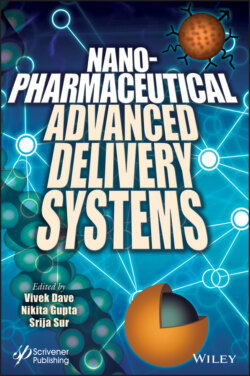Читать книгу Nanopharmaceutical Advanced Delivery Systems - Группа авторов - Страница 40
2.2 Classification of Nanoparticulate Carriers
ОглавлениеBroadly, the nanoparticulate carriers (Figure 2.1) can be categorized as lipid-based systems, micelles, thernostics, polymeric carriers, and self-emulsifying drug delivery systems (SEDDSs) (Table 2.1a). The lipid-based systems consist of concentric assemblies of one or more lipid bilayers, formed from amphiphilic building blocks in the presence of water. Liposomes, solid lipid nanoparticles (SLNs), nanolipid carriers (NLCs), etc. belong to this category. SEDDSs correspond to the emulsion-based lipidic systems prepared using surface active agents that self-emulsify in the gastrointestinal tract. Micelles, reverse micelles, etc. employ micellar solubilization of drug in the aqueous phase. Each of these categories has been briefly discussed in the following sections. The list and the classification, though exhaustive, are not limited. Various parameters need to be considered while choosing the carrier system for drug delivery, viz. the interactive forces between the nanocarriers and the biological environment, morphology of the target tissue, conductivity and mechanical properties, composition, size and surface characteristics, drug loading and drug retention capacity, and mechanism of release of drug from the carriers. Recently, due to non-responsiveness to the conventional treatment therapy, application of nanocarriers for the treatment of tuberculosis is also being proposed. Table 2.1b mentions various types of nanoparticulate carriers that are being studied for treatment of tuberculosis.
